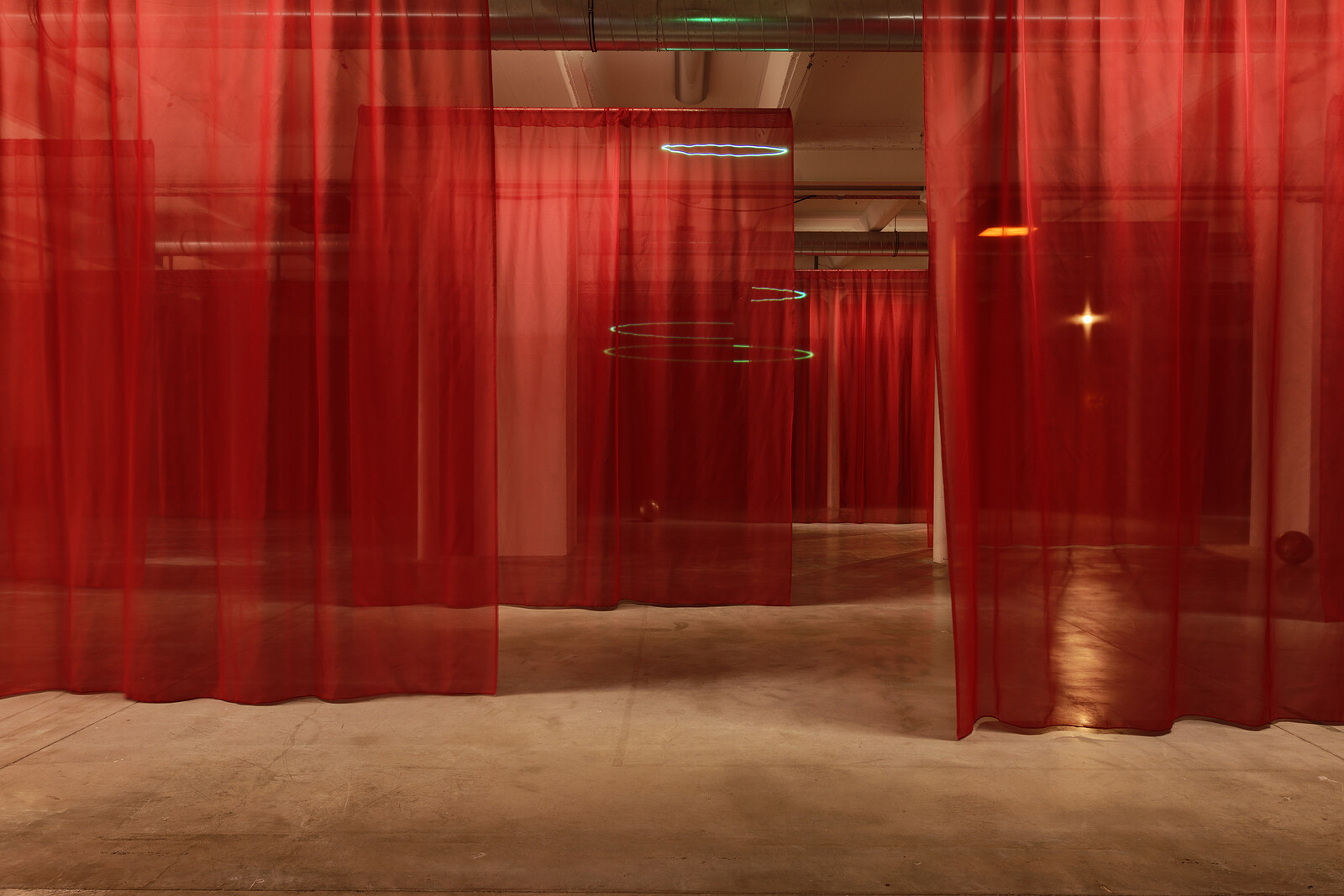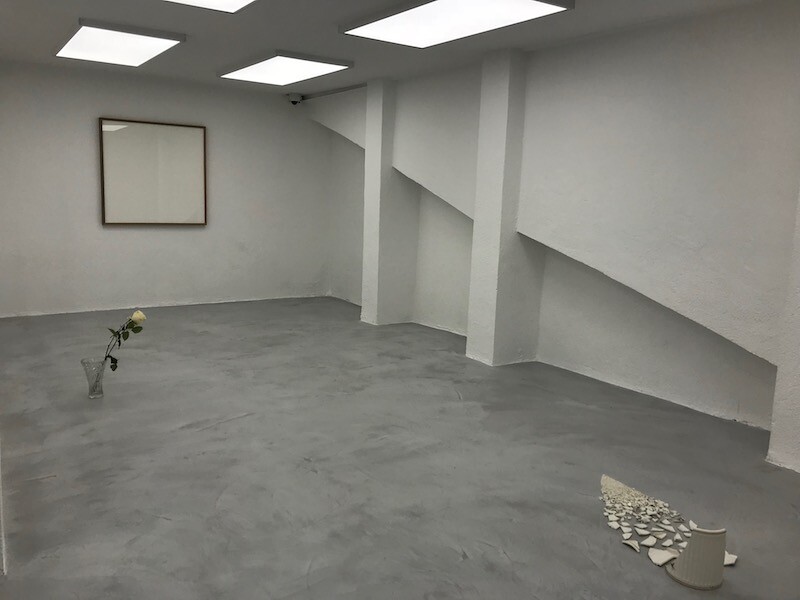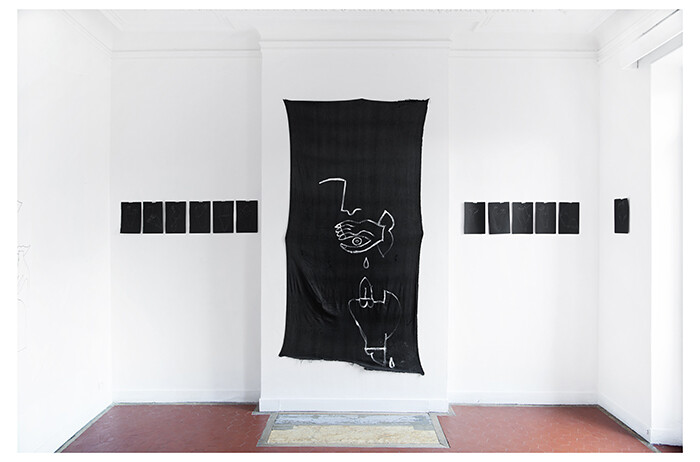Categories
Subjects
Authors
Artists
Venues
Locations
Calendar
Filter
Done
September 10, 2019 – Review
Paul Maheke’s “OOLOI”
Natasha Marie Llorens

In Octavia Butler’s classic sci-fi trilogy Xenogenesis (1987–89), the ooloi are a third-gender alien species of the Oankali. Notorious shape-shifters, they are the bioengineers of their kind and are able to gather genetic material from others and build that of their offspring, therefore embodying the complexity of queer kinship theories and the socio-political potential of a third subjective space. “OOLOI,” Paul Maheke’s exhibition at La Friche de la Belle de Mai, the former tobacco factory where Triangle France is located, borrows its title from Butler’s Oankali aliens.
In the space, Maheke suspended layer upon layer of diaphanous red fabric in large square panels from the ceiling of the massive open room. The fabrics undulate slightly in the wind created by fans placed on the floor along the length of the exhibition hall. Large theater spotlights click on and off abruptly, or glow slowly into force and then fade. Brass and copper spheres roughly the size of soccer balls are scattered on the floor throughout the space. Though daylight and the shadow of fabric moving are faintly reflected on the sculptures’ semi-polished surfaces, these orbs remain static, acting as anchors for everything “OOLOI” comprises but does not materialize: the unseen characters, the …
February 7, 2019 – Review
Stéphanie Saadé’s “L’espace de 70 jours”
Natasha Marie Llorens

A thick layer of breadcrumbs covers the floor of the upstairs room at Galerie de la Scep in Marseille. Early in the evening of the opening, there are only a handful of footsteps that show the passage of other viewers through the space. No one has yet tracked baguette particles—sourced from local bakeries over the course of several months—downstairs and into the two other rooms that comprise Stéphanie Saadé’s solo exhibition, “L’espace de 70 jours” [The space of 70 days], which is the show’s running time.
This installation, Miettes de Tradition [Crumbs of tradition] (2018–19), produces a subtle sense of estrangement. It separates the act of walking into cause and effect, denaturalizing it just enough to place me at a distance from my own movement. I walk about gingerly, aware of the crunching beneath my sneakers. I do not shift my weight from foot to foot, I conserve my steps, staying before the other objects in the room rather than walking around. I am made aware of my participation in the crumbs’ displacement and their gradual disintegration. Every time pressure is applied to the floor something irreversible happens.
Saadé refers to her work as creating a sense of “artificial nostalgia.” Her nostalgia …
September 22, 2017 – Review
Vava Dudu’s “Vertige profonde”
Natasha Marie Llorens

Vava Dudu’s “Vertige Profonde” at Marseille’s Salon du Salon is visually balanced to the point of stillness. The solo show occupies two adjoining rooms on the third floor of a spacious old bourgeois apartment on l’Avenue du Prado, a wide boulevard radiating out of the city center towards the south and into the city’s richer neighborhoods. Grids of pen-and-ink drawings on notebook paper and intertwining compositions scrawled across thin cotton sheets can do nothing—in the sense that desire is unstable and the drawings are about the movement of the body with another—to disturb the exhibition’s equilibrium.
Small mounds stand out invitingly, sketched with slim lines, tucked inside abstract folds. Holes weep as the silhouettes of fingers slide into them. Disembodied breasts drip, lightly cupped by large hands. What kind of soft volume is that finger spreading beneath it, with its insistence on the vertical axis? “Does it matter?” Dudu’s drawings ask. There is nothing balanced about desire, and yet here it is, stilled, caught on rectangles of paper and cloth, so that one can focus on the implications of just that one mouth and the hand that is tangled around whatever it is sucking on.
“Vertige Profonde” translates as intense or deep …